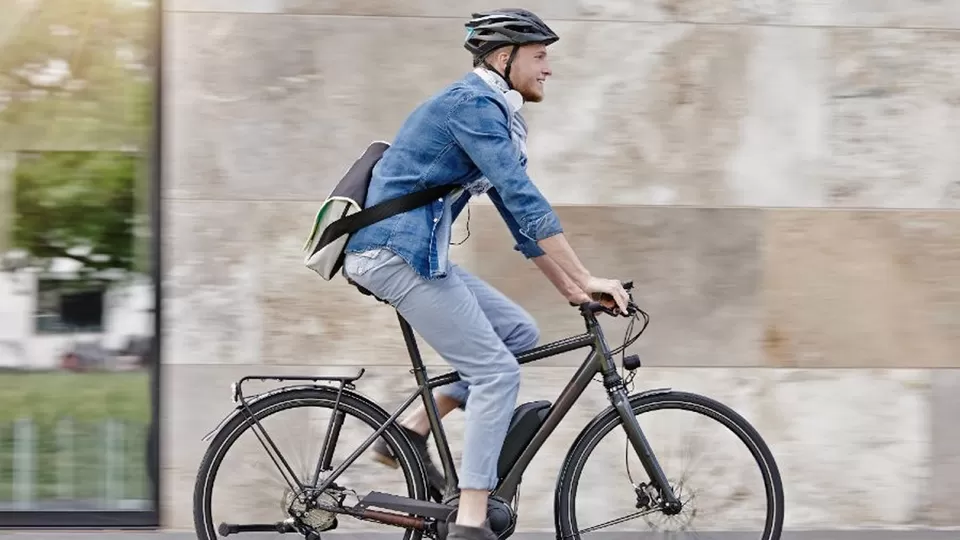In recent years, e-bikes have surged in popularity, offering a sustainable, efficient, and enjoyable mode of transportation. Whether you're commuting to work, exploring scenic trails, or simply looking for a fun ride, e-bikes provide a modern alternative to traditional bicycles and cars. This article will delve into everything you need to know about e-bikes, from their components and benefits to how they are revolutionizing the future of personal mobility.
What is an E-Bike?
An e-bike (electric bicycle) is a bicycle equipped with an electric motor that assists with pedaling. The motor works in conjunction with the rider’s own effort, providing power for easier acceleration, climbing hills, and maintaining speed on flat terrain. E-bikes typically feature a rechargeable battery that powers the motor, allowing riders to travel longer distances with less effort.

Core Components of an E-Bike:
Electric Motor: The motor provides pedal assistance, typically located in the front, rear, or center of the bike.
Battery: A rechargeable lithium-ion battery that powers the motor. Battery life depends on usage and can last between 20 to 100 miles on a single charge.
Controller: The controller manages the power delivered from the battery to the motor based on rider input.
Display Panel: A screen that shows key metrics like speed, battery life, distance traveled, and power settings.
Why Choose an E-Bike?
1. Environmentally Friendly Transportation
E-bikes are a green alternative to gas-powered vehicles, producing zero emissions. By switching to an e-bike, riders contribute to reducing air pollution, lowering carbon footprints, and promoting cleaner cities. As the world faces increasing concerns over climate change, adopting e-bikes can be an impactful way to live more sustainably.
2. Cost-Effective
While the initial cost of an e-bike may be higher than a traditional bicycle, they are far more affordable than owning and maintaining a car. With no gas expenses, lower maintenance costs, and the ability to bypass traffic, e-bikes provide significant savings over time. Additionally, e-bikes are exempt from many parking fees and toll charges that apply to motor vehicles.
3. Health and Fitness Benefits
Although e-bikes are equipped with a motor, they still require physical effort to operate. The pedal-assist feature encourages riders to stay active, promoting cardiovascular health, improving muscle strength, and burning calories. Moreover, cycling on an e-bike is easier on the joints, making it an excellent option for people with physical limitations or those recovering from injuries.
4. Faster and Convenient Commuting
E-bikes offer a faster and more convenient alternative to traditional commuting methods. Whether you’re navigating through city traffic or taking a shortcut on a bike path, e-bikes allow you to get to your destination more quickly without worrying about parking or long delays. With an e-bike, you can skip the hassle of waiting in traffic jams, making your daily commute more efficient.
5. Accessibility for All Ages
E-bikes cater to people of all ages and fitness levels. Seniors, people with physical limitations, and those new to cycling can benefit from the motorized assistance, making cycling more accessible. The ease of riding and the ability to travel longer distances without exhaustion make e-bikes suitable for a wide demographic.
Different Types of E-Bikes
1. Commuter E-Bikes
Commuter e-bikes are designed for everyday urban use. These bikes are lightweight, feature comfortable seating, and include practical accessories such as racks, lights, and fenders to protect riders from the elements. They are perfect for those looking to use an e-bike for work, school, or errands in a city environment.
2. Mountain E-Bikes
Mountain e-bikes, or e-mountain bikes (eMTBs), are built for off-road adventures. These bikes are designed with thicker tires, suspension systems, and robust frames to handle rugged trails, steep climbs, and rough terrain. With a powerful motor, riders can enjoy challenging routes without as much physical effort.
3. Folding E-Bikes
For those with limited storage space or commuters who need to use public transport, folding e-bikes offer the perfect solution. These bikes can be compacted into smaller sizes for easy storage or transport. Folding e-bikes are lightweight, portable, and ideal for individuals who need flexibility in their daily routines.
4. Road E-Bikes
Road e-bikes are sleek, lightweight, and designed for speed on paved roads. These bikes are ideal for riders who want to go fast on highways or long-distance rides while still benefiting from motorized assistance. They typically feature thin tires and aerodynamic designs to reduce drag and maximize performance.
How to Choose the Right E-Bike
1. Motor Power
E-bikes come with different motor power options, typically ranging from 250W to 750W. The higher the wattage, the more assistance the motor will provide, especially when tackling hills or longer rides. For most urban commuting, a 250W to 500W motor is sufficient, while more powerful motors are recommended for off-road riding or mountainous areas.
2. Battery Range
The range of an e-bike depends on the battery capacity and the level of pedal assistance used. A larger battery typically offers a greater range, but it also adds weight. On average, most e-bikes can travel between 30 to 70 miles on a single charge. Riders should assess their daily commute distance or intended use to choose a bike with an appropriate range.
3. Bike Weight
E-bikes are heavier than traditional bicycles due to the motor and battery. If you need to lift or transport your bike frequently, consider the weight of the model you choose. Lightweight e-bikes are easier to handle but might have slightly less powerful motors or smaller batteries.
4. Price Range
E-bikes can vary greatly in price depending on their features, brand, and quality. Entry-level e-bikes can cost as little as $500, while high-end models with premium features can exceed $5,000. Determine your budget and find a model that balances quality, features, and cost.
5. Comfort and Ride Experience
Comfort is key, especially for longer rides. Pay attention to factors like saddle quality, handlebar position, and suspension. An ergonomic frame, adjustable handlebars, and cushioned seats can make a big difference in overall comfort.
The Future of E-Bikes
E-bikes are more than just a passing trend—they represent the future of personal transportation. As technology continues to improve, we can expect longer battery life, faster charging times, and even more efficient motors. Additionally, e-bikes are being integrated with smart features such as GPS tracking, mobile app connectivity, and remote diagnostics.
With more cities around the world embracing cycling infrastructure and offering incentives for eco-friendly transportation, the adoption of e-bikes will continue to grow. The future of urban mobility is increasingly looking electric and sustainable.
Conclusion: Why E-Bikes are the Future of Transportation
E-bikes are revolutionizing the way we think about personal transportation. Offering the perfect balance of convenience, environmental sustainability, and physical benefits, e-bikes are transforming urban mobility and opening up cycling to a wider audience. Whether you’re looking to improve your fitness, reduce your carbon footprint, or simply enjoy the freedom of the open road, an e-bike is a smart, modern choice.
As e-bikes become more advanced, affordable, and accessible, there’s never been a better time to make the switch. Embrace the future of transportation—ride electric!














